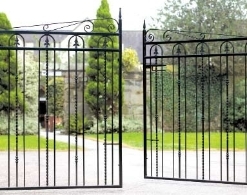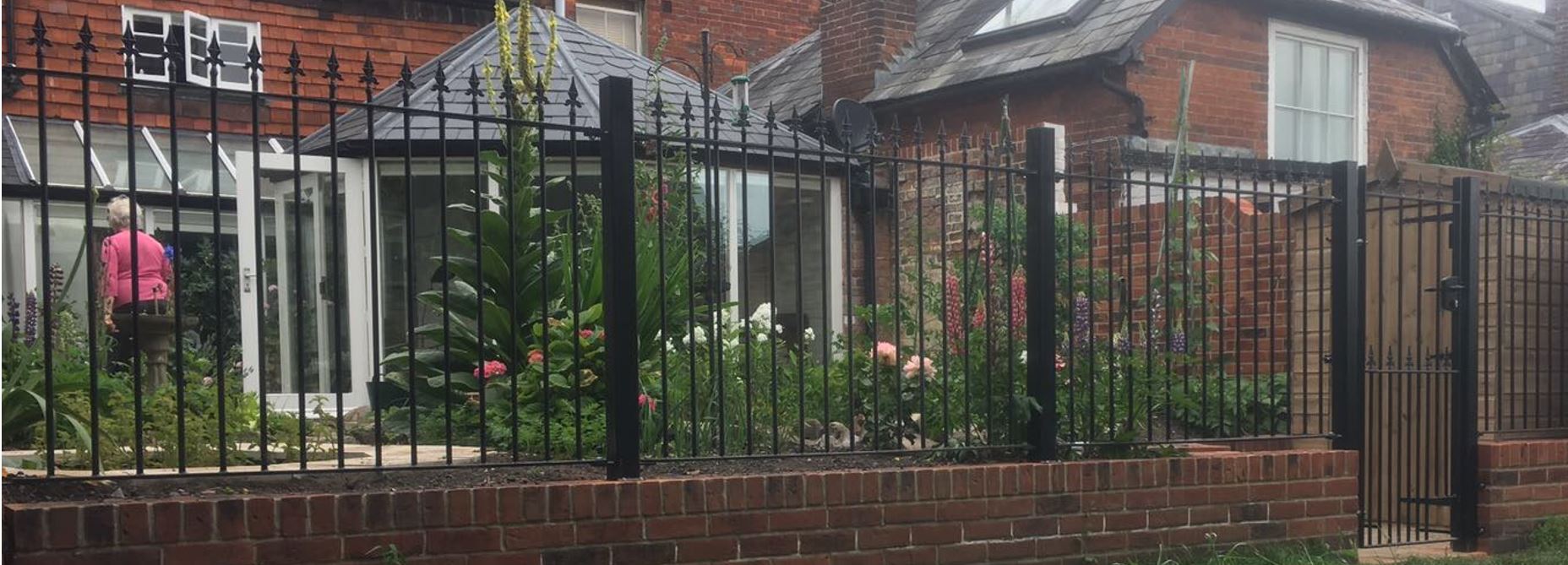If you’re ever in the situation of making a choice between traditional wooden fencing and contemporary metal fencing – you will have no doubt, come across a tonne of info that may leave you scratching your head! The appeal of one’s property is not the only factor which needs to be considered for this decision; maintenance over time, cost-effectiveness, and the life span also come into play. This guide aims to differentiate metal wooden options to assist in deciding the best fit for your property.
Durability and Longevity
Perhaps the most important difference between metal and wood stems from the life span of the material. Metal fencing made from galvanised steel and aluminium lasts anywhere between twenty-five to fifty years while wrought iron, if well maintained, can last even longer.
Wooden fencing does not fare as well in comparison, providing a life span of ten to fifteen years at best. British weather takes its toll as timber becomes vulnerable to rotting, warping, and insect infestations. Pressure-treated timber is more robust but still falls short during comparisons with metal.
Maintenance Requirements
When it comes to choosing fencing materials, maintenance considerations are one of the most important factors. Wooden fencing has a relatively high level of upkeep, typically demanding treatment every 1-2 years to weatherproof to prevent it from decaying. This treatment involves sanding, staining or painting, and sealing which are all expensive over the wooden fence's lifetime.
On the opposite end, metal fencing has almost zero ongoing maintenance. Most metal fences only require cleaning with soap and water occasionally to take off dirt. Powder coated metal fencing is the best when it comes to fighting corrosion so there is no need to repaint regularly. Some metal fences can rust at the welds or scratches but, that is minimal compared to the maintenance wooden fences require.
Environmental Considerations
We are finding that owners increasingly consider the bearing of the fence on the environment when making the final decision. If wooden fencing comes from a managed forest, it does have renewable resources to rely on. In addition, wood will biodegrade when it is no longer useful. Still, the lifespan-extending chemical treatments applied to wood can seep into soil and introduce toxic compounds detrimental for the ecosystem.
Steel and aluminium fencing are exceptionally recyclable materials as they can be melted down and used again and again without quality loss. Wooden fencing comes with many benefits; however, it has a major downside when it comes to carbon emissions. Metal fencing does have a higher carbon emission cost up front than wooden fencing, but due to longer lifespan, the emissions will balance out in the long run.
Aesthetic Appeal and Design Versatility
Unlike other materials, wood adds a cozy touch along with a classic look which people appreciate, especially in countryside or heritage settings. Wooden fences can be shaped and finished in a range of ways from rustic post-and-rail to elegant picket fences.
Modern manufacturing makes it possible to create complex custom designs which wouldn't be possible with wooden materials as metal fencing is unmatched when it comes to design versatility. The intricate details of metal fencing are made stronger by the slim profile of metal, as it provides strength without visual bulk.
Security and Strength
When it comes to security concerns, metal fences are preferred over wooden fences. Wooden fences may be damaged or breached quite easily, but quality metal fencing poses a significantly more formidable barrier.
Exceeding security requirements for commercial and high security residential areas is achieved by tall metallic security fencing that may possess anti-climb features. Wooden fencing, while capable of achieving great heights, does not possess the durability and strength of metal alternatives.
Cost Considerations
Metal fencing usually comes at a higher cost than wooden fencing, which makes the latter more desirable from a short-term perspective, especially during initial installation. However, when considering lifetime costs, this calculation changes dramatically. Despite requiring a higher initial investment, metal fencing's extensive lifespan and low maintenance makes it more economical over time.
The Verdict: Which is Superior?
Strictly speaking, metal fencing tends to outperform wooden fencing and is the better option when considering overall performance. Its unparalleled strength coupled with low upkeep and high adaptability make it the clear choice of fencing. While wooden fencing does present charming aesthetics along with an appealing initial price, they drastically increase the long-term costs bringing them to the less desirable option for nearly all property owners looking for lasting quality and performance.
From stylish front garden railings to strong security perimeter fencing, Metal Gates Direct has an extensive range of metal fencing options. Property owners can find both standard and bespoke fence panels designs in various metals, finishes, and styles to perfectly enhance your property and protect it for decades to come.




